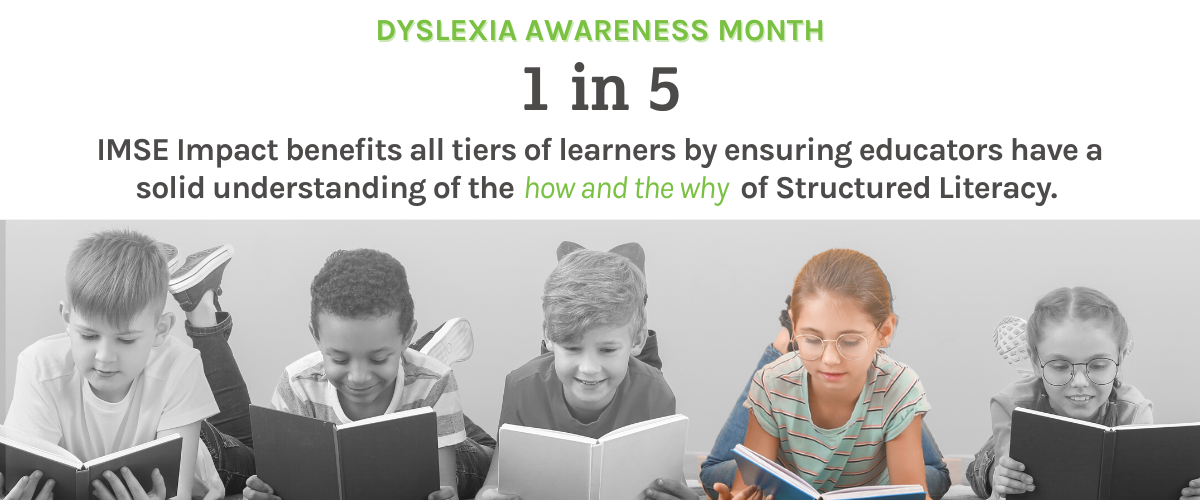In the ever-evolving world of education, it is essential for educators to foster an inclusive environment where every student can thrive. However, the path to inclusivity can be challenging, especially when faced with the complexities of learning differences like dyslexia.
Understanding dyslexia is not merely an option; it’s crucial for educators. By gaining a deep understanding of dyslexia, educators can play a pivotal role in leveling the academic playing field, nurturing students’ self-esteem, and empowering them to achieve their full potential.
In part 1 of the blog series Demystifying Dyslexia: A Comprehensive Guide for Educators, we will look at what dyslexia is and address some common myths surrounding this topic.
So, What Is Dyslexia?
Dyslexia is a neurobiological disorder that primarily affects an individual’s ability to read, write, and spell. It is characterized by difficulties in processing phonological awareness, decoding, and fluency. Contrary to some misconceptions, dyslexia is not a result of laziness, lack of intelligence, or inadequate teaching. Instead, it is a lifelong condition that can significantly impact an individual’s academic and personal life if not properly understood and addressed.
Early warning signs of dyslexia include:
- Frequent spelling mistakes
- Letter or number reversals after first grade
- Slow, choppy reading
- Guessing after repeated exposure to letters or words
- Poor comprehension
- Poor memory for sight words (they, were, does)
- Difficulty following instructions with multiple steps
- Trouble memorizing math facts
Dyslexia can hinder an individual’s ability to keep pace with peers, leading to lower academic performance. Young learners with dyslexia may struggle to decode words, leading to slower reading rates and comprehension difficulties. These challenges can result in frustration and diminished self-esteem, affecting their confidence and learning engagement. Additionally, dyslexia can have social and emotional repercussions, as students may feel isolated or anxious due to their difficulties in keeping up with their peers.

Common Myths Surrounding Dyslexia
One common misconception about dyslexia is that it is a rare condition, but it’s quite prevalent. Approximately 1 in 5 individuals may have some degree of dyslexia. This means that in an average classroom, there are likely to be a few students struggling with dyslexia-related challenges. Dispelling such misconceptions is crucial to creating an inclusive educational environment where students with dyslexia can receive the support and accommodations they need to succeed.
One of the most pervasive myths about dyslexia is that it reflects a lack of intelligence. In reality, dyslexia has no bearing on a person’s overall intellectual capacity. Dyslexic individuals often possess unique talents and strengths in areas such as creativity, problem-solving, and visual thinking. The challenges they face in reading and language processing are specific to dyslexia and do not diminish their cognitive abilities. It’s crucial to recognize that intelligence and dyslexia are entirely separate attributes, and many successful individuals with dyslexia have excelled in various fields.
Another common misconception is the belief that dyslexia is a phase that individuals can outgrow with time or through more reading practice. Dyslexia is a lifelong condition that persists into adulthood. However, with appropriate support and intervention, individuals with dyslexia can develop strategies to manage their challenges effectively and become proficient readers and writers. Early intervention is key to improving outcomes, but it’s essential to understand that dyslexia does not disappear with age.
Understanding the holistic impact of dyslexia is essential for educators, parents, and academic leaders to provide the necessary interventions, accommodations, and emotional support to help individuals with dyslexia thrive. By addressing the challenges of dyslexia comprehensively, we can empower these individuals to overcome obstacles, tap into their strengths, and ultimately pave the way for a successful future.
Be sure to check back for the rest of the series being released this Dyslexia Awareness Month:
- Diagnosing Dyslexia Part 2 of Demystifying Dyslexia: A Comprehensive Guide for Educators
- Supporting Students with Dyslexia Part 3 of Demystifying Dyslexia: A Comprehensive Guide for Educators
- Orton-Gillingham and Dyslexia Part 4 of Demystifying Dyslexia: A Comprehensive Guide for Educators
Please connect with us on Facebook, Twitter, Instagram, LinkedIn, and Pinterest to get tips and tricks from your peers and us. Read the IMSE Journal to hear success stories from other schools and districts, and be sure to check out our digital resources for refreshers and tips.
